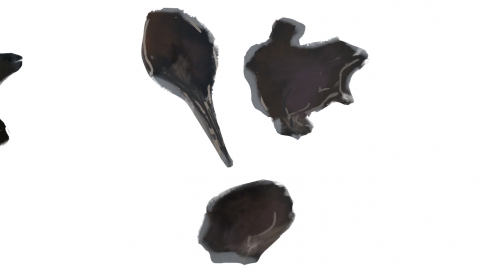Are Black Aconite Root and Black Prepared Aconite Root the same?
Generally speaking, both Hei Fuzi and Hei Shunpian come from the same plant species, but they are not exactly the same in practical applications. The detailed analysis is as follows:

Both Hei Fuzi and Hei Shunpian are derived from the dried tuberous roots of Aconitum carmichaelii (commonly known as Wu Tou), differing only in their processing methods. Hei Fuzi is made from the main root of Wu Tou after a complex processing procedure that includes washing, slicing, and boiling, aimed at reducing its toxicity. Hei Shunpian, on the other hand, is produced from the lateral roots using a specific processing technique, with differences in both processing method and degree of processing compared to Hei Fuzi.
Both herbs share similar therapeutic effects, including restoring yang to counteract collapse, warming the body by enhancing fire (representing yang energy), and dispelling cold to relieve pain. However, Hei Fuzi has relatively stronger toxicity and a more potent effect, typically used in treating critical and severe conditions involving yang collapse. Hei Shunpian, having undergone processing to reduce its toxicity, possesses a milder medicinal property and is more widely used clinically, commonly indicated for conditions such as wind-cold-damp obstruction syndrome and insufficiency of heart yang. When using these herbs, it is essential to strictly follow medical advice and select the appropriate herb under the guidance of a qualified physician.
During the intake of traditional Chinese medicine, consumption of raw, cold, spicy, or greasy foods should also be avoided to prevent interference with the medicinal effects.




